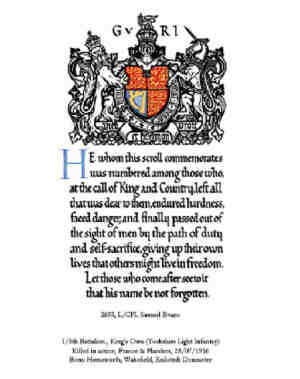Samuel Evans
- Born: 1887, Hemsworth, near Pontefract, West Yorkshire England
- Christened: 6 Jun 1887, Hemsworth, near Pontefract, West Yorkshire England
- Marriage (1): Mary Jane Lunn on 18 Nov 1911 in St Helens, Hemsworth, near Pontefract, West Yorkshire England
- Died: 28 Jul 1916, Flanders Belgium at age 29
- Buried: Authuille, Departement de la Somme, Picardie France
Cause of his death was Killed in Action.
Noted events in his life were:
• source.
• Military.
Samuel married Mary Jane Lunn, daughter of John William Lunn and Elizabeth Beech, on 18 Nov 1911 in St Helens, Hemsworth, near Pontefract, West Yorkshire England. (Mary Jane Lunn was born on 13 Aug 1893 in Five Ways, Cannock, Staffordshire England and died in Sep 1960 in Hemsworth, near Pontefract, West Yorkshire England.)
|
